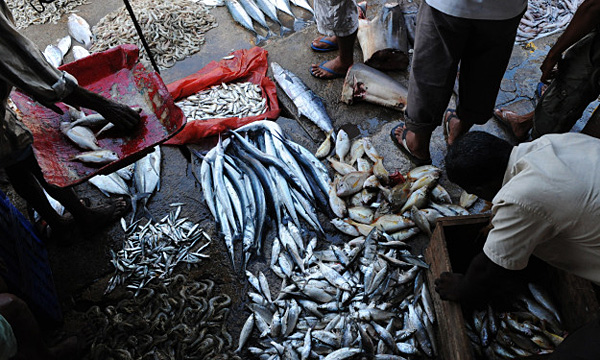
|  |  |  Editorials | Issues Editorials | Issues  
The Save-the-World Clock - Part 8
 Elizabeth Dickinson - Foreign Policy Elizabeth Dickinson - Foreign Policy
go to original
September 23, 2010


| | (Ishara S.KODIKARA/AFP/Getty Images) |  |
GOAL: ENSURE ENVIRONMENTAL SUSTAINABILITY

Targets: This goal was written before climate change became the overriding issue for environmentalists, and accordingly it focuses instead on "sustainability" - the idea that economic growth can be achieved without depleting natural resources. One sub-goal was to reduce the number of species that disappear each year by 2010. A second component was to halve the proportion of people who have access to sanitation and drinking water and to make life better for the millions of slum dwellers worldwide.

Reality: In a word, disaster. The world didn't meet its 2010 targets to stop the loss of species, and 13 million hectares of forest are still uprooted each year. And with climate change accelerating, these problems may well get worse before they get better. Nor is life improving much for slum dwellers, of which there are some 828 million today, an increase from 657 million in 1990. Sanitation is also lagging, having improved just 8 percentage points between 1990 and 2006, according to the secretary-general's pre-summit report. By 2015, 2.4 billion people will still be without sanitation systems, the World Health Organization estimates - the same number who lack them today.

The collapse of the U.N. climate summit in Copenhagen in December 2009 does not bode well for future political agreements on environmental damage. There was one piece of good news from the summit, however: an offer by rich countries to pay developing countries some $30 billion to conserve forest land.

Improving sanitation systems, meanwhile, turns out to be one of the more difficult tasks that governments have encountered, particularly in rural areas where the infrastructure often has to be built up from scratch. Only 45 percent of rural dwellers worldwide have access to such sanitation systems. "It's the biggest global system gap," says John McArthur, CEO of Millennium Promise, an organization set up to help promote the MDGs. Much of the improvement that has come about has been less technical than educational - improving awareness about sanitation and intestinal parasites.

Even more critical than the technical challenge, however, is the political one - and here, the MDGs offer less help. NGOs can build wells, donors can give money, but at the end of the day, regulating water is a question for governments. McArthur cites Senegal as a country that has made progress in this area by making it a priority for the government, targeting specific economic and regional groups that are in most need of new facilities. Other countries have struggled to divert scarce resources to what is an expensive, long-term problem. Worldwide, it would cost an estimated $142 billion to build the needed sanitation systems and another $216 billion to maintain them, the World Health Organization estimates.

|

 |
|  |



